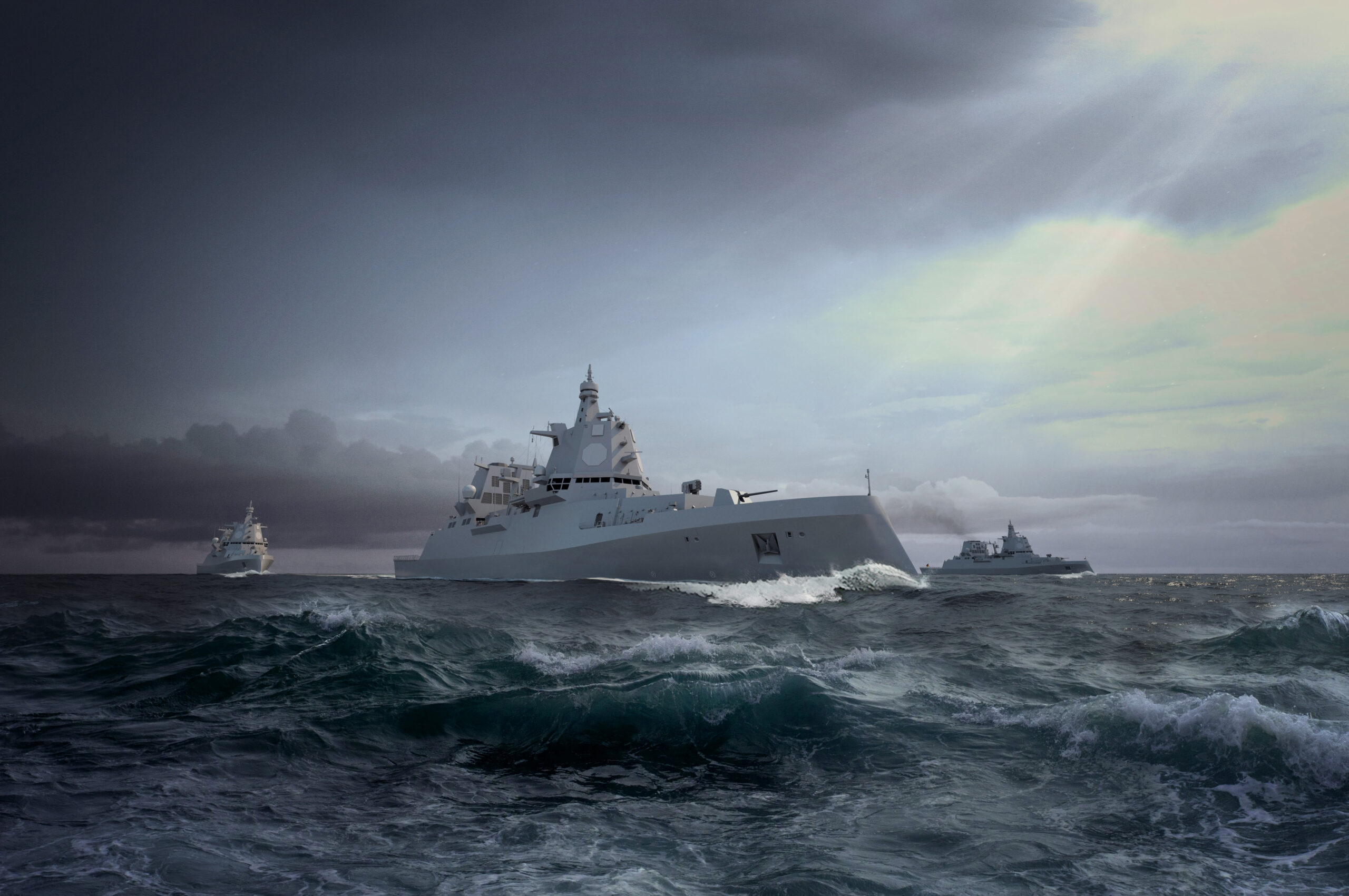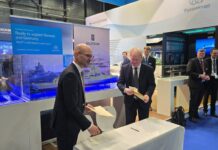Intended to replace and expand the capacity provided by the German Navy’s existing F124 Sachsen class air defence frigates, the F127 frigate programme will deliver up to six new major surface combatants from the mid-2030s onwards. The project has been gathering momentum over recent months and important decisions on its future direction are imminent. This article looks at the progress that the programme has achieved to date and explores its importance for Germany’s naval industry.
Programme requirement
The German Navy’s current air defence capabilities primarily reside in its F124 Sachsen class frigates. These ships were developed in collaboration with the Netherlands and Spain following the collapse of the NFR-90 NATO Frigate Replacement programme. They were completed with the Thales APAR multifunction and SMART-L surveillance radars also found in the contemporary Dutch LCF (De Zeven Provinciën) class. Three ships of the F124 type were ordered from the ARGE F124 consortium in June 1996, entering service between 2003 and 2006. An option for a fourth vessel was never exercised.

In addition to replacing the maritime and theatre air defence capacity offered by the existing air defence frigates, the F127 class are expected to make a broader contribution by providing a sea-based capability to defend against hypersonic and ballistic missile threats in the lower interception layer. This will, in turn, give them a significant role in, notably, homeland defence, as well as forming part of a NATO ballistic missile shield. This decision has had important consequences with respect to equipment selection. The F127s are also specifically intended to provide a long-range precision strike capability against hardened targets, as well as being able to contribute towards a broader range of maritime functions.
The current official requirement is for five F127 frigates to replace the three members of the F124 Sachsen class, presumably reflecting the more extensive range of missions that they are expected to perform. However, the German Navy’s ‘Vision 2035+’ fleet structure plan envisages the eventual acquisition of six F127 frigates. This is in line with its consistent application of a 1:3 ratio under which each deployable vessel needs to be supplemented by two more to provide for maintenance and training.
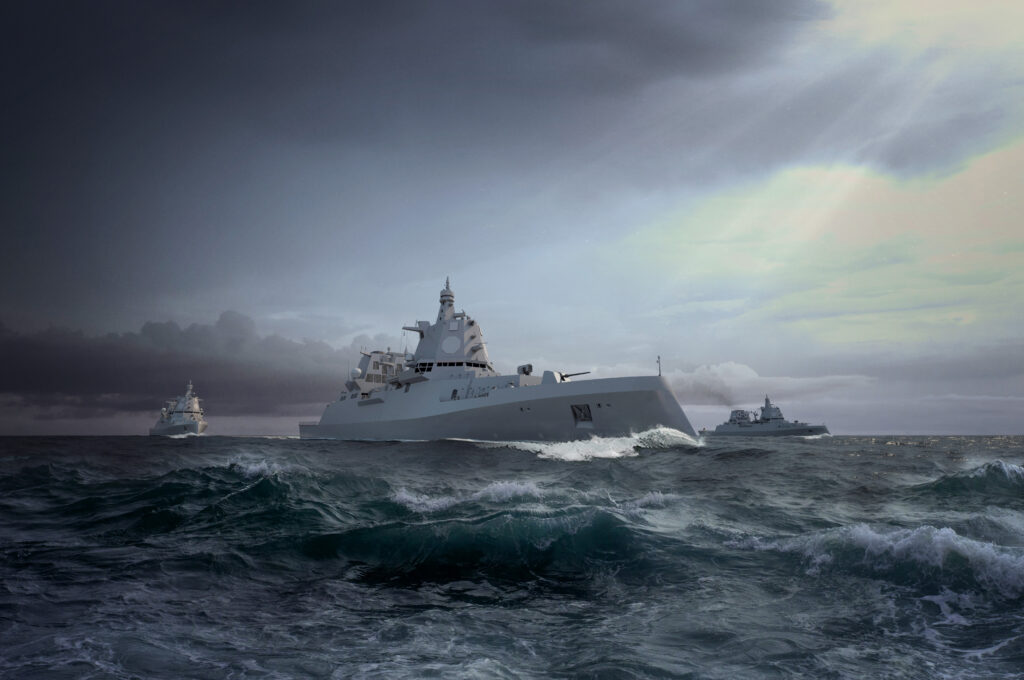
The F127 project is currently in the final stage of what is known in Germany as the analysis phase, part 2. This process is being conducted by the Federal Office of Bundeswehr Equipment, Information Technology and In-Service Support (BAAINBw) with the support of the independent MTG Marinetechnik GmbH naval consultancy. It encompasses a range of system architecture, requirements and life cycle cost analyses, as well a market survey of suitable national ship designs. This process will lead to a selection decision, which is expected to be taken imminently. This in turn, should pave the way for the conclusion of negotiations with a preferred commercial partner prior to the receipt of parliamentary approval for contract signature. This is likely to be received in the course of 2026.
One important decision that has already been taken was the 2023 selection of Lockheed Martin’s Aegis combat system to form a core element of the new frigates’ combat management equipment. This reflects Germany’s desire to use a proven system to provide the new class’s broader range of air and missile defence capabilities, with Aegis being the natural choice in this regard. The use of Aegis also essentially determines the selection of US Navy Standard missiles and Mk 41 vertical launch systems (VLS) for the frigates’ primary armament. Aegis will be linked to a broader combat management system in similar fashion to the use of the International Aegis Fire Control Loop (IAFCL) in conjunction with the Spanish Navy’s SCOMBA combat management system in their F110 Bonifaz class frigates. The new Canadian ‘River’ class destroyers will also integrate the IAFCL with the Lockheed Martin Canada developed CMS-330 combat management system. There has been widespread media speculation that this combination may be used in the German ship.
In December 2024, the German parliament’s Defence and Budget Committees approved funding of EUR 44.5 million for preparatory studies relating to the integration of Aegis within the preferred F127 class design. It has been reported that his work will be allocated to Lockheed Martin through the US Foreign Military Sales (FMS) process and that it will assist completion of contractual discussions with the preferred builder scheduled for later this year.
Industrial considerations
The selection of Aegis has had significant implications for the broader industrial strategy underpinning the F127 frigate programme. It was initially envisaged that the successful collaboration between Germany and Netherlands that produced the existing F124 Sachsen and LCF De Zeven Provinciën classes would be continued into their next generation of air defence warships. To this end, a letter of intent relating to the joint development of these new ships and their main systems was signed between the two countries in December 2020. However, Germany’s subsequent choice of US technology for key elements of their ships’ combat systems seems to have put paid to this cooperation. This is largely because Thales’ Dutch operations have effectively been denied the opportunity to supply their equipment to the F127 programme.
It seems likely that this loosening of naval industrial ties between Germany and Netherlands will also extend to the programme’s shipbuilding strategy. Germany’s current, six-strong F126 class shipbuilding programme is being led by Dutch Damen in partnership with NVL. This involves an industrial framework under which much design and systems engineering work is taking place in the Netherlands but with actual construction being located in Germany. However, it seems that realisation of the F127 frigates will return to being an all-German model following the announcement of a partnership between thyssenkrupp Marine Systems (tkMS) and NVL to bid for the programme in September 2024.
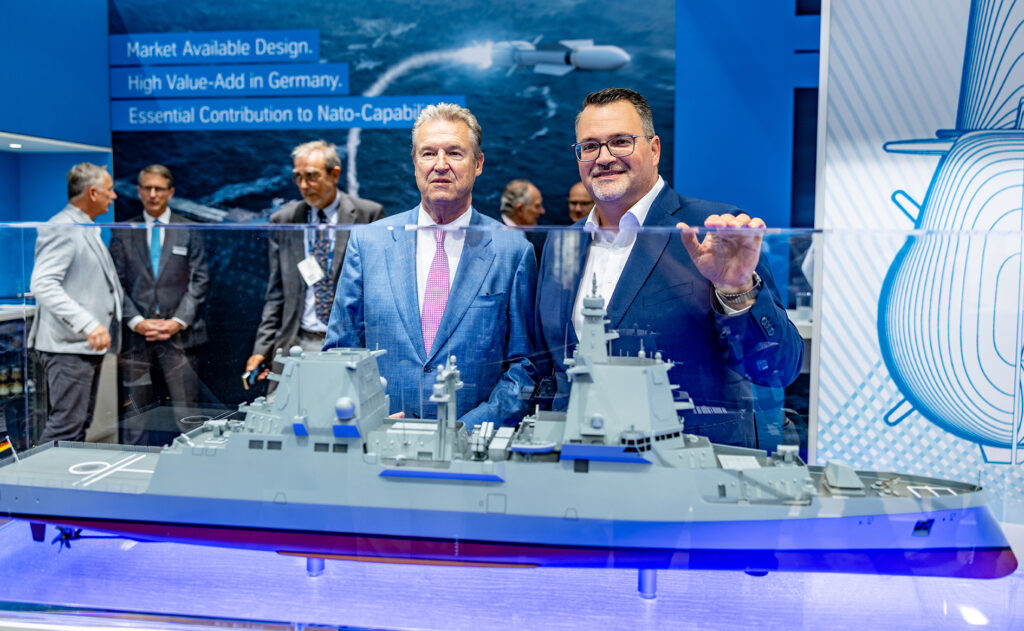
The tkMS-NVL consortium’s position as lead contractor for the F127 project will not become official until contracts are finalised. However, it is difficult to see a competitor for the role emerging given the likely inability of any other German shipbuilder able to implement such a complex programme. Nevertheless, the likely re-emergence of tkMS to lead the project is a remarkable turnaround from its much-criticised delivery of the F125 Baden-Württemberg class stabilisation frigates and subsequent exclusion from the final round of bids for the F126 Niedersachsen class. It remains to be seen whether it can put these past difficulties behind it in implementing the new project.
MEKO A-400 AMD design
The reality that tkMS has achieved pole position to secure the F127 contract makes it increasingly likely that its MEKO A-400 AMD (air and missile defence) concept will form the basis for the new frigate’s design. Details of the concept first emerged in mid-2024 but should be regarded as only suggestive of the F127’s likely configuration pending a formal announcement of the preferred bidder.

| Table 1: MEKO A-400 AMD Concept – Principal Particulars | |
| Deployed displacement: | 10,000 tonnes |
| Dimensions: | 160 m (165 m overall) × 21 m × 5.5 m |
| Propulsion: | CODLOG. Maximum speed of 32 kt |
| Endurance: | Approximately 4,000 NM. Over 30 days at sea without replenishment. |
| Possible armament: | Defensive missiles to combat air threats, long-range missiles to combat targets at sea and on land, tube-launched weapons. |
Graphic released by tkMS suggest an evolution of previous MEKO designs, including the ‘twin citadel’ forward and aft superstructure arrangement first introduced in the Baden-Württemberg class. This facilitates an element of redundancy in key equipment. Space has been found for a total of 64 vertical launch system (VLS) cells split equally forward and amidships; twice the number found in the Sachsen class but arguably still on the low side given both current trends and the hull’s overall size. Up to two helicopters can be embarked and sustained, whilst there is provision for modular systems. Much equipment is already within the German Navy’s current inventory. This in line with company claims that, “The use of proven concepts (for example, propulsion system, electrical power supply, on-board helicopter integration, accommodation standards, and well-known weapon system components) minimises construction risk”. The design’s primary arrays could be either Raytheon’s AN/SPY-6 radar or Lockheed Martin’s competing AN/SPY-7 system, with the final selection still being subject to German confirmation.
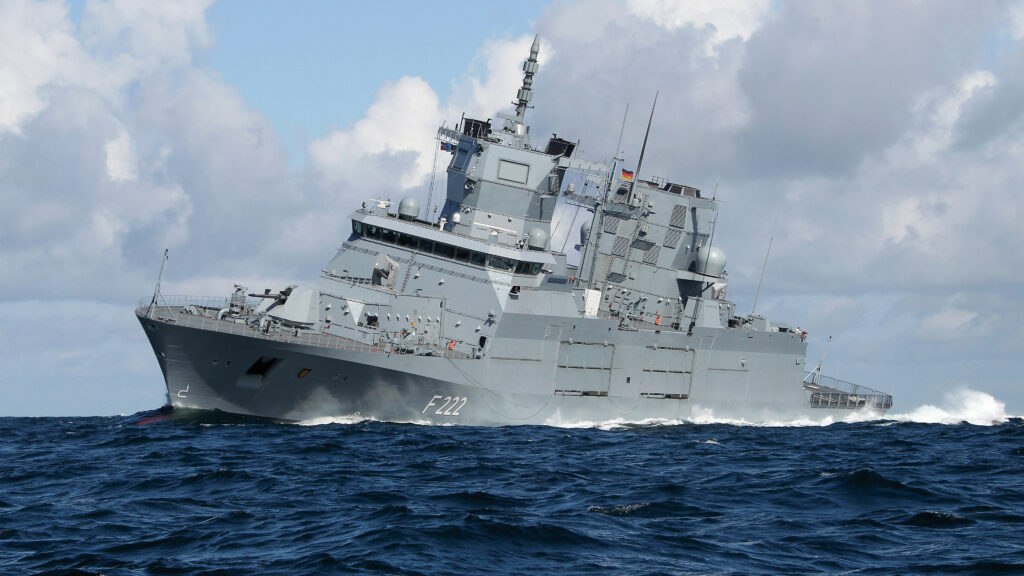
Whilst a formal German design selection is still awaited, tkMS is already promoting the MEKO A-400 AMD concept for the Norwegian Navy’s requirement for new frigates. Norway’s quadrennial Long-term Defence Plan for the period through to 2036, approved by the Norwegian parliament in June 2024, stated that a minimum of five frigates equipped with anti-submarine helicopters were needed to replace its remaining four Navantia-built Fridtjof Nansen class vessels. Subsequently, in November 2024, the country announced that France, Germany, the United Kingdom and the United States had been invited to discuss meeting the requirement as part of a strategic partnership. Given its established relationship with Norway through the joint Type 212CD submarine acquisition, tkMS presumably believes it is in a strong position to gain the lucrative contract.
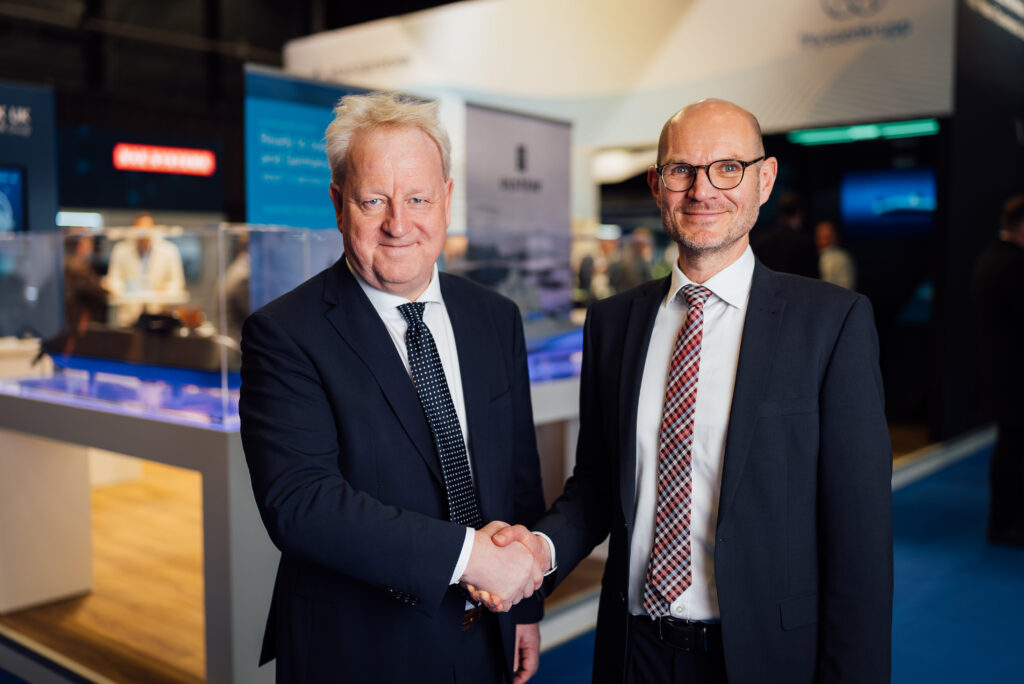
Although tkMS’ sales campaign has much in its favour, it will face stiff competition. Positively, in addition to Germany’s existing links with the Norwegian defence sector through the Type 212CD programme, the offer of an Aegis-equipped vessel might also prove attractive given the Royal Norwegian Navy’s previous preference for the system in the Fridtjof Nansen class. However, the Norwegian requirement seemingly emphasises a strong anti-submarine warfare (ASW) capacity, which is not one of the F127 class programme’s primary design requirements. Norway also wants to achieve deliveries of the new ships at an early date. However, the F127 programme is at a much more immature stage in its development than its competitors. At the time of writing, the Norwegian government is scheduled to make a decision as to which country to partner before the end of 2025.
Important decisions ahead
With a total programme cost currently estimated at around EUR 15 billion, the F127 frigate programme represents the German Navy’s most significant acquisition of recent years. From a purely operational perspective, it provides the navy with a very significant uplift in its overall capabilities, notably extending its role beyond the seas to form an important component of homeland air defence. However, the programme’s significance is, perhaps, most notable in the industrial sphere. Here, the formation of the tkMS-NVL consortium to realise the programme will likely lead to the former’s return to its former leadership in German naval construction and, potentially, even give rise to the long-debated consolidation of the German naval shipbuilding sector. With the Norwegian government’s decision on which country to partner to realise its own frigate requirement in the months ahead, 2025 looks set to be a significant year for German naval shipbuilding.

Author: Conrad Waters is a naval and defence analyst. He is editor of Seaforth World Naval Review, Joint Editor of Maritime Defence Monitor and a regular contributor to other Mittler Report publications.


